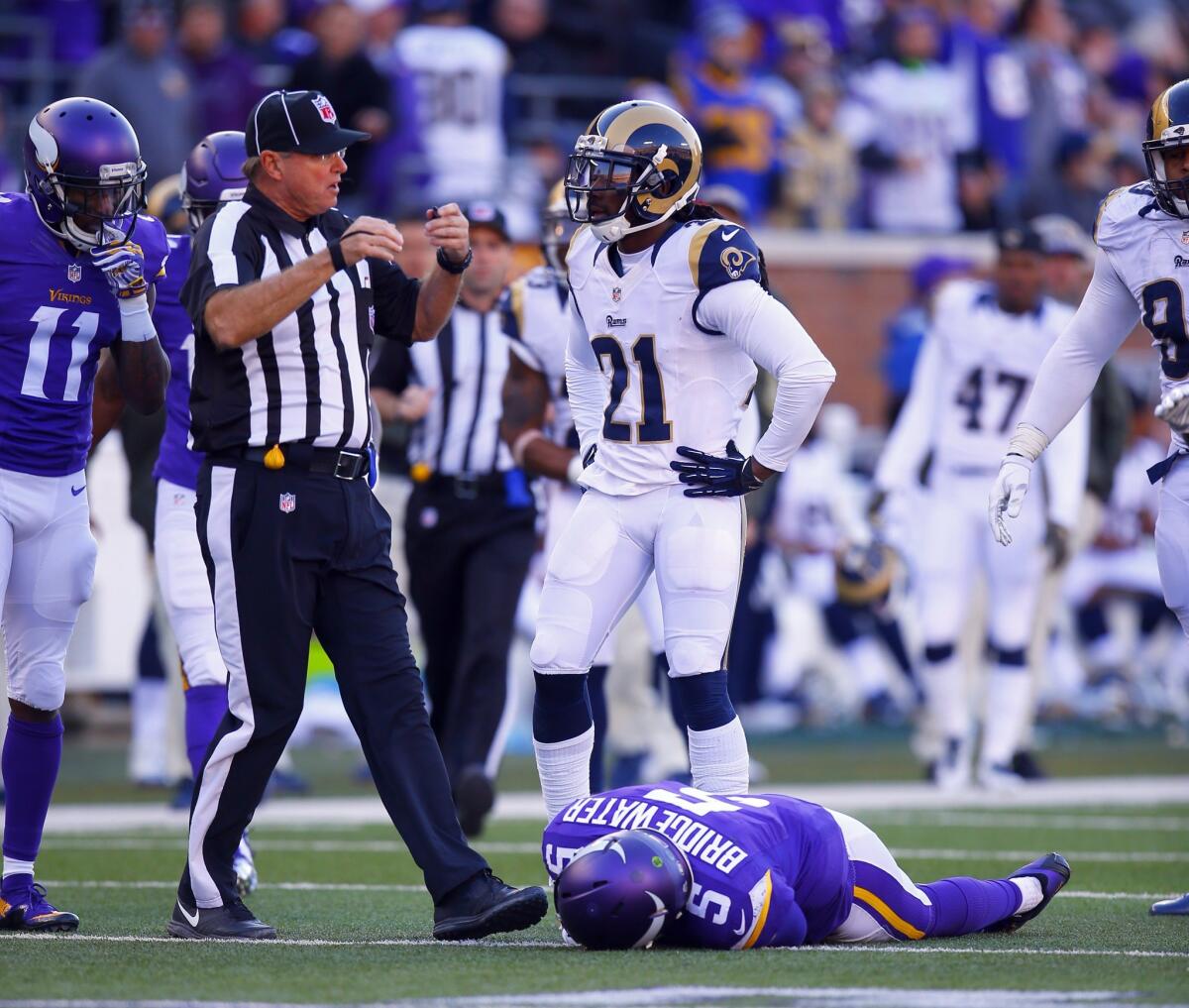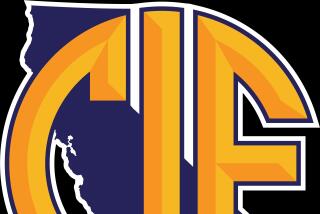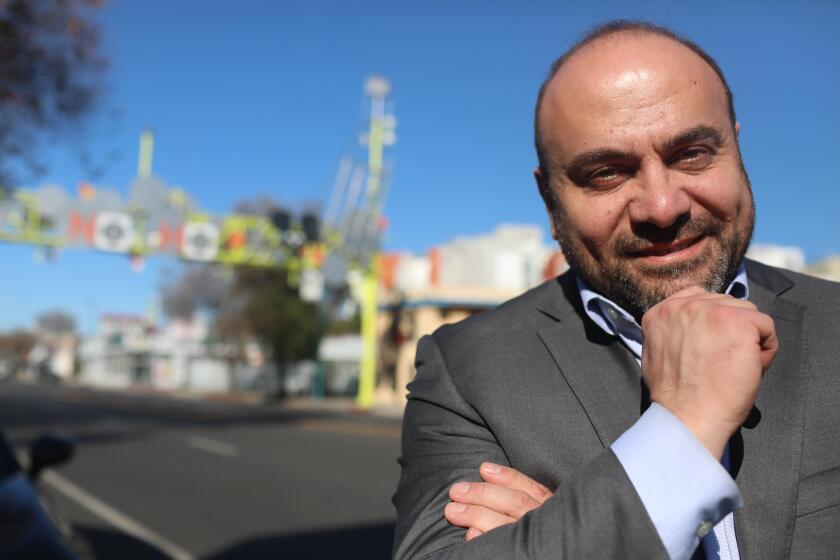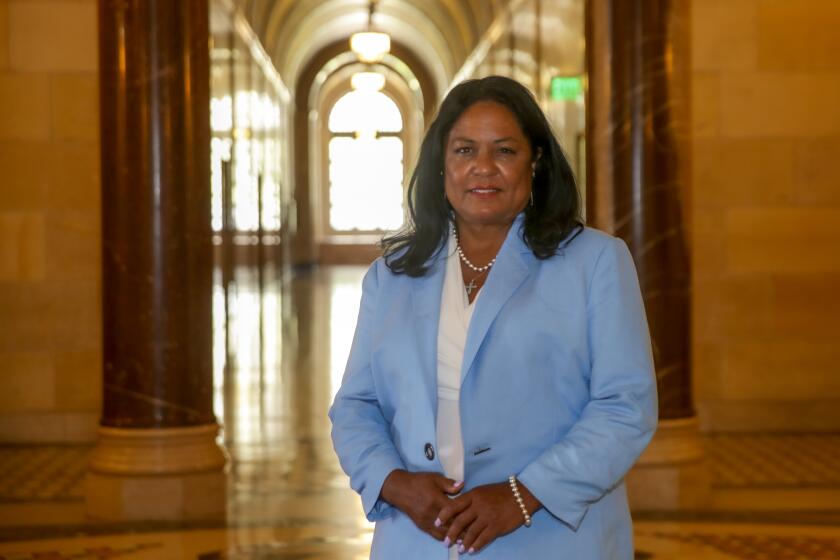Editorial: Reducing concussion risk in sports demands a proactive approach

Minnesota Vikings quarterback Teddy Bridgewater (5) lies on the field after a tackle to his head by St. Louis Rams cornerback Lamarcus Joyner during an NFL football game Sunday, Nov. 8, 2015.
For sports fans, the transition from one year to the next marks the arrival of the college bowl games, the looming end of the National Football League’s regular season and the National Hockey League’s New Year’s Day “Winter Classic.”
What do all these sporting events have in common? Concussions. A new movie by that name tells the story of Pittsburgh pathologist Dr. Bennet Omalu, who first connected repeated concussions among professional football players with the later onset of chronic traumatic encephalopathy, the brain disease that has led to the premature deaths and suicides of dozens of former athletes. Yet this issue isn’t confined to the pros; it extends down to youth leagues. Since Omalu’s discovery, attention has focused on the repercussions among athletes — particularly young players whose brains are still developing — from “getting their bell rung.” Now every state in the country has some sort of law establishing how public school coaches are to deal with suspected concussions among their players.
Now every state in the country has some sort of law establishing how public school coaches are to deal with suspected concussions among their players.
Is that enough? The jury is out. Some states, including California, limit the number of full-contact practices high school football coaches may hold, reducing the opportunities for concussions. Yet most of the laws have limited enforcement mechanisms. At the professional level, the NFL moved slowly to deal with the issue after its hand was forced by a lawsuit filed by afflicted former players and the high-profile deaths of stars such as former linebacker Junior Seau. The league now has protocols under which independent medical professionals determine whether a player is concussed and, if so, how long he must be sidelined. But professional leagues in other contact sports, such as the NHL and FIFA, lag behind, leaving the responsibility to team doctors who answer to the coaches, rather than requiring an independent assessment.
Most of these measures deal with how to respond when a player has been injured but do little to reduce the chances of a concussion in the first place. There have been some advances in helmet designs, and, at the professional level, rule changes leveling penalties on those whose play endangers others. But more needs to be done, including tighter enforcement of existing rules (watch a European soccer match to see hard-contact play in which fouls aren’t called) and more research into safer practices.
At its heart, though, the issue is rooted in the culture of contact sports, some of which (like boxing or mixed martial arts) rely on behavior which, if it occurred on the street, would be a felony. Similarly, fistfights are an integral part of professional hockey.
It would probably be impossible, and unwelcome to fans, to significantly ratchet back the amount of hard physical contact in football, hockey, lacrosse, soccer and other sports in which speed, strength and physical exertion are intrinsic to the game. But we can do more to reduce the emphasis on toughness and the mantra of “play through the pain,” and to incorporate better practices. It’s unconscionable that playing a game bears such significant risks of life-altering — and life-ending — injuries.
Follow the Opinion section on Twitter @latimesopinion and Facebook
More to Read
A cure for the common opinion
Get thought-provoking perspectives with our weekly newsletter.
You may occasionally receive promotional content from the Los Angeles Times.










